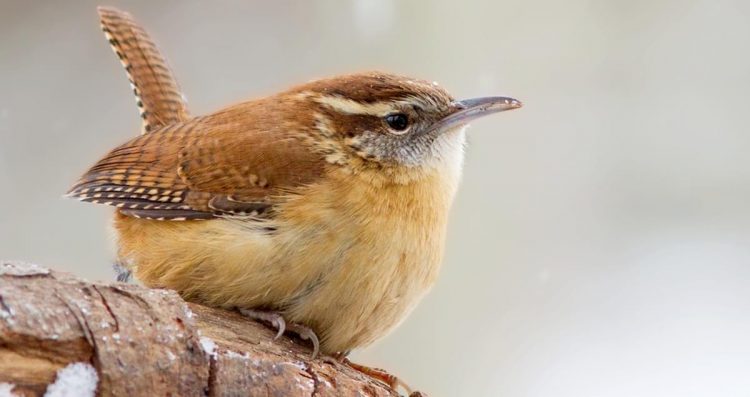Many birders are confused about the difference between Carolina Wren vs House Wren. They have close resemblances, making them difficult to identify.
Carolina Wren
Carolina Wren (Thryothorus ludovicianus) is a beautiful small bird with rusty upperparts, cinnamon underparts, and a different white eye stripe. The Wren is about 4.9 to 5.5 inches long, with an 11-inch wingspan and a weight of about 18 to 23 g. The male and female birds are identical in plumage. However, the male is every so often slightly larger. Carolina Wren is a stocky and large-headed sparrow-sized bird with a bold white stripe above the eye.
And it is warm, rusty brown above and buffy cinnamon below; dark brown bars on wings and tail; and white chin, throat, and upper breast. It is a large wren, the second largest in the United States after the cactus wren. The bird’s preferred habitat is dense cover in forests, farm edges, and suburban areas. The Carolina Wren song is a bold “teakettle, teakettle, teakettle.
The bird songs can be confused with the Kentucky warbler. When Carolina Wren finds a mate, he tries to form pairs to maintain a territory and stay together for several years. The diet consists of invertebrates, such as beetles, grasshoppers, true bugs, katydids, spiders, ants, bees, wasps, small lizards, frogs, vegetables, fruit pulp, and various seeds. Listen to the songs of Carolina Wren.

House Wren
The House Wren (Troglodytes aedon) is a small songbird of the Wren family. The bird is generally a dull grayish-brown with darker barring on the wings and tail. The bird’s eyebrow line is faint, the bill is thin and slightly de-curved, and the tail is longish and often kept cocked. Hence, the bird is overall brown, darker above and lighter below, and has a pale streak above the eye.
It has a light eye ring, and its back wings have dark, narrow, dark-barring long bills, yellow at the base and black at the tip. The narrow black barring on the tail, hence the bird song, is an energetic, flutelike melody of gurgling outbursts. This is the most widely distributed bird in the Americas. Its taxonomy is highly complex, and some subspecies groups are often considered separate species.
An adult bird’s size is 4.3 to 5.1 inches long with a 5.9-inch wingspan, and it weighs about 10 to 12 g. The House Wren is a rich, bubbly songbird that is commonly heard during the nesting season but rarely afterward. This bird mainly eats insects such as butterfly larvae, spiders, and snails. House wrens rarely attend mixed-species feeding flocks. As a birdwatcher, you should know the difference between the Carolina Wren vs House Wren. Listen to the song House Wren.

Read More: The Magical Blue-throated Barbet






